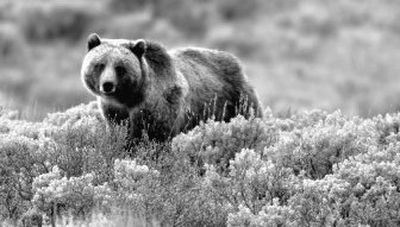Yellowstone grizzlies will be taken off endangered list

After more than 30 years of strict federal protection, the Bush administration is removing the Yellowstone population of grizzly bears from the endangered species list.
Formidable remnants of the wild frontier, the Yellowstone grizzlies, living in and around the national park, have rebounded from fewer than 200 animals in 1975, when they were listed as a threatened species, to around 600 today.
“There is simply no way to overstate what an amazing accomplishment this is,” Deputy Interior Secretary Lynn Scarlett said Thursday of the grizzly’s comeback.
The move means that for the first time in three decades, grizzlies could soon be hunted on a limited basis in some parts of the Yellowstone region – outside the park – where the largest population of grizzlies in the lower 48 states roams across thousands of square miles of mostly federal wild lands.
Were it not for the sanctuary of the park, the Yellowstone bears undoubtedly would have vanished, victims of hunting and clashes with humans who unwittingly attracted them with open garbage dumps and then took a rifle out to settle the encounter.
While environmentalists agreed the bear numbers have climbed to a heartening degree, some criticized the Yellowstone delisting, warning that climate change is reducing a vital food source and human population growth is increasing the chances of lethal run-ins.
“We’re going to take action to fight this,” said Louisa Willcox, Wild Bears Project manager for the Natural Resources Defense Council. “It’s ill-conceived and premature.”
According to federal wildlife officials, there are now 1,100 to 1,400 of the iconic creatures in the lower 48 states. Four other populations in northern Montana and in parts of Idaho and Washington will remain protected under the Endangered Species Act.
There are an estimated 30,000 grizzlies in Alaska and another 25,000 in Canada.
The key to their success is that they have all gotten money and attention, said Chris Servheen, grizzly bear recovery coordinator for the U.S. Fish and Wildlife Service.
“The act works,” he said. “I’m lucky to work on a species that is big and flashy but a lot of people don’t have that luxury.”
Wildlife managers have spent $24 million over the last quarter century on grizzly recovery.
The image of an angry grizzly standing taller than a man – a fierce, untamable force of nature – runs though Western lore. There were more than 50,000 of them in the lower 48 states in 1800. By the mid 1970s, they had been hounded and hunted to near extinction, their numbers reduced to fewer than 1,000.
They rebounded in the Yellowstone region because the killing stopped. Hunting was banned. Open garbage pits were closed, reducing the human encounters that had so often left the grizzly dead.
The delisting, which will be published in the federal register Thursday and take effect a month after that, will turn over management of Yellowstone grizzlies living outside the park to Wyoming, Montana and Idaho. Bears inside the park will continue to be managed by the National Park Service.
The states have signaled they may allow hunting of the grizzlies outside the park, but that would have to occur within strict mortality limits established by federal biologists.
“Hunting will in no way ever threaten the future of the Yellowstone grizzly,” Servheen said, predicting that only a handful of hunting licenses would be issued.
Under the delisting, a 9,200-square mile conservation area will be established that encompasses the habitat of most of the bears. Within that area, activities that could hurt the population – such as new campsite development or livestock grazing – will be restricted by federal land managers.